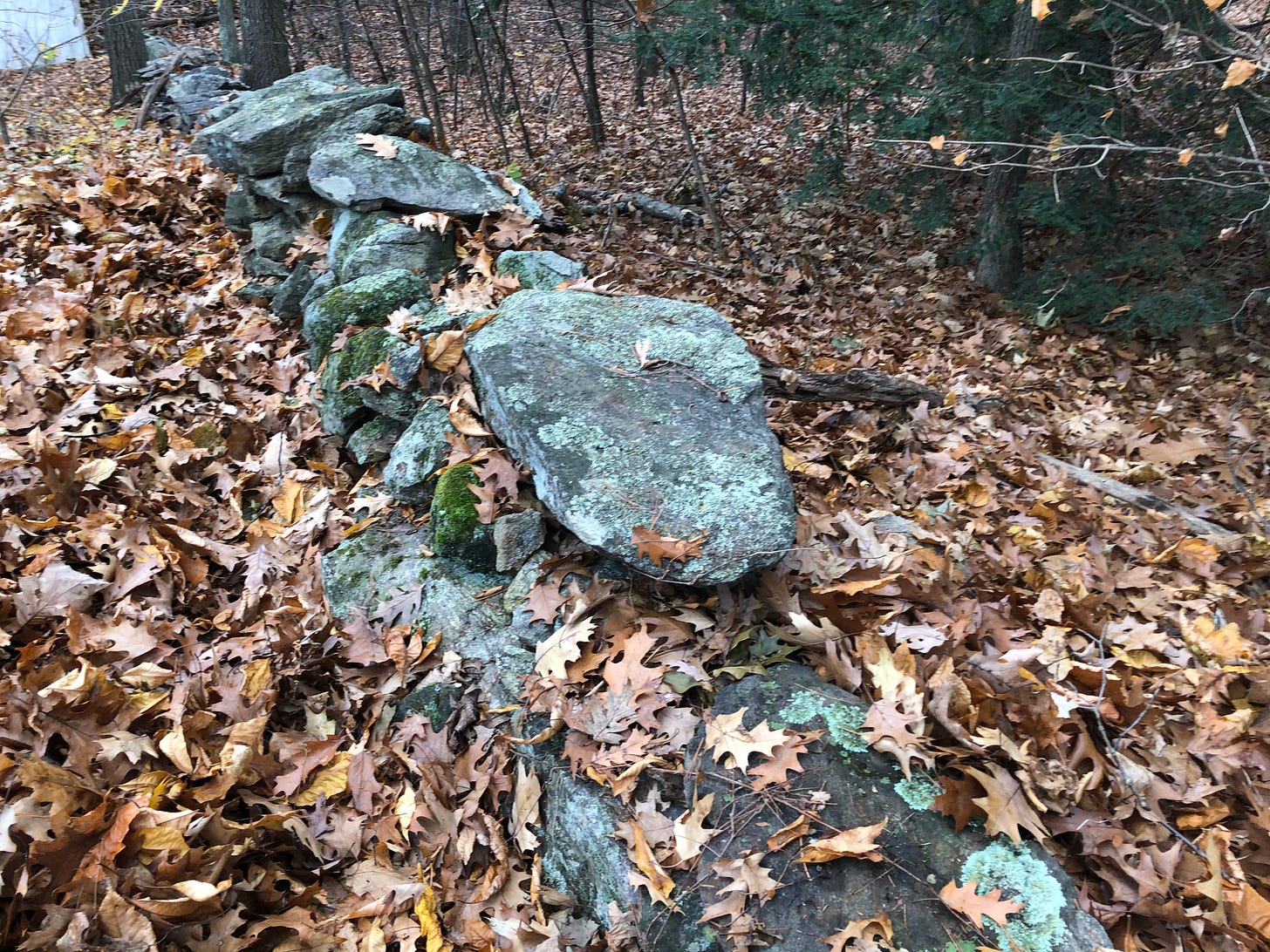Rediscovering Kequasagansett
Possible Sacred Stone and Water Works Around Gates Pond in Berlin, Massachusetts
Part One: Kequasagansett?
The old town history of Berlin, Massachusetts explained that Gates Pond and its surroundings were once known to the Indigenous Peoples as Kequasagansett. A prominent “Indian Stone” known as Sleeping Rock marked the northwest corner of the property, then known as Gates Farm, at the northern base of Sawyer Hill.
The Reverend William A. Houghton wrote in The History of Berlin, Worcester County, Massachusetts, from 1784 to 1895 (1895):
“…some minor things of slight importance have been handed down by tradition, showing that Indians have been here, -- one of which, that Indians took up their abode occasionally for the night in the cavity of a certain rock, since called “Sleeping rock” situated on the Hudson Road…”

Berlin was once part of Bolton; both were originally part of the enormous frontier town first known as Nashaway, then Lancaster. Colonial Lancaster was the site of some bloody confrontations in King Philip’s War in the 1670’s, serving as the setting for a famous (infamous) abduction tale related by one Mary Rowlandson.
A couple of curious confrontations later occurred right around this pond.
During Queen Ann’s War in 1705, while the area was still part of Lancaster, Indigenous Peoples allied with the French took captives who lived near Gates Pond, near another “Indian Stone”, King Philip’s Rock, carrying them up to Canada.
Thirty years later, Sawyer Hill to the north was said to be the site of another attempted “Indian Ambush”. The supposed-victim, grandson of an earlier abductee, claimed to have made a great, leaping getaway.

These things, too, were evidently famous. For a while.
I’m learning much of this for the first time, however. It is eye-opening – as so much of the Indigenous history of this area in Massachusetts has proven to be. This all happened not far from where I grew up. Yet none of this was shared in school.
In the 1970’s, we weren’t taught much of anything about the deep indigenous background of our region. Yet my hometown of Hudson, Massachusetts, once a part of Marlborough, made up much of the “Indian Praying Village” of Ockookangansett in the mid 1600’s. A possible stone effigy row rises as a brief old stone wall a house away in my old neighborhood.
Ockookangansett was a place where indigenous and colonial folks lived alongside each other before the wars. Where Christian Ministers attempted to convert Indigenous folks to their religion. And where Indigenous Peoples were rounded up during the first of the wars, before being exiled to an island in Boston Harbor, where many of them died.
Indigenous Peoples have lived in the area for thousands of years.
A 4000+ year old Rockshelter with a stone wall in front, the earliest known stone structure in Massachusetts, was discovered in Flagg Swamp, a mile or so west of my childhood home. It was excavated… and then blown up, to make way for a highway, the site and its well-documented 4000-year-old stone wall seemingly forgotten.
As I wandered among hilltop boulders near Gates Pond, about a mile north of Flagg Swamp, on the other side of the Assabet River – and Route 495 – I wondered if history was about to repeat itself. There were disturbing signs, wooden stakes with orange flags and other spray-painted orange markings found among the stones atop Sawyer Hill.
South of the hill, the stone rows led down into what appeared to be stone-lined water channels, the sides of the berms built up and reinforced with stone. Though degraded and covered by ages of overgrowth enough to make me wonder at first if I was looking at work, upon closer inspection I found there was reason and order here, human handiwork – as well as a U-shaped structure and a stone-lined spring.
There was a great deal of interesting, possibly Indigenous Stonework north of Gates Pond in Berlin, Massachusetts. There could be a Sacred Stone Landscape atop that hill, but not everyone accepts that this sort of stonework is the work of Indigenous Peoples. Known to be most hostile, many state officials in Massachusetts dismiss the idea outright. But creating awareness of the possibility that this could be a Sacred Place seems important.
Who lived here up through the years? What did they do with the land? Where did the names come from? Was there any record of Indigenous Peoples in the area? Could they have worked in stone on these hills? Looking into the background of Gates Pond and its environs, I discovered it was once Kequasagansett. And found that searching for answers led to a deep and interesting Indigenous History running along paths which often crossed my own.
Correction: Earlier versions of this story reported that the abduction of three men in 1705 took place just south of Gates Pond. I've been told this is incorrect, and that the abduction took place further north, in what is still Lancaster proper, near Four Ponds.









